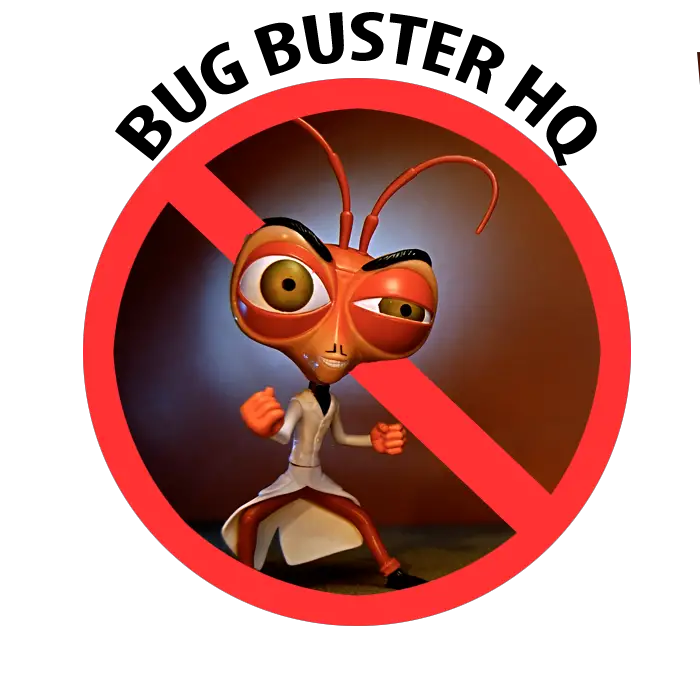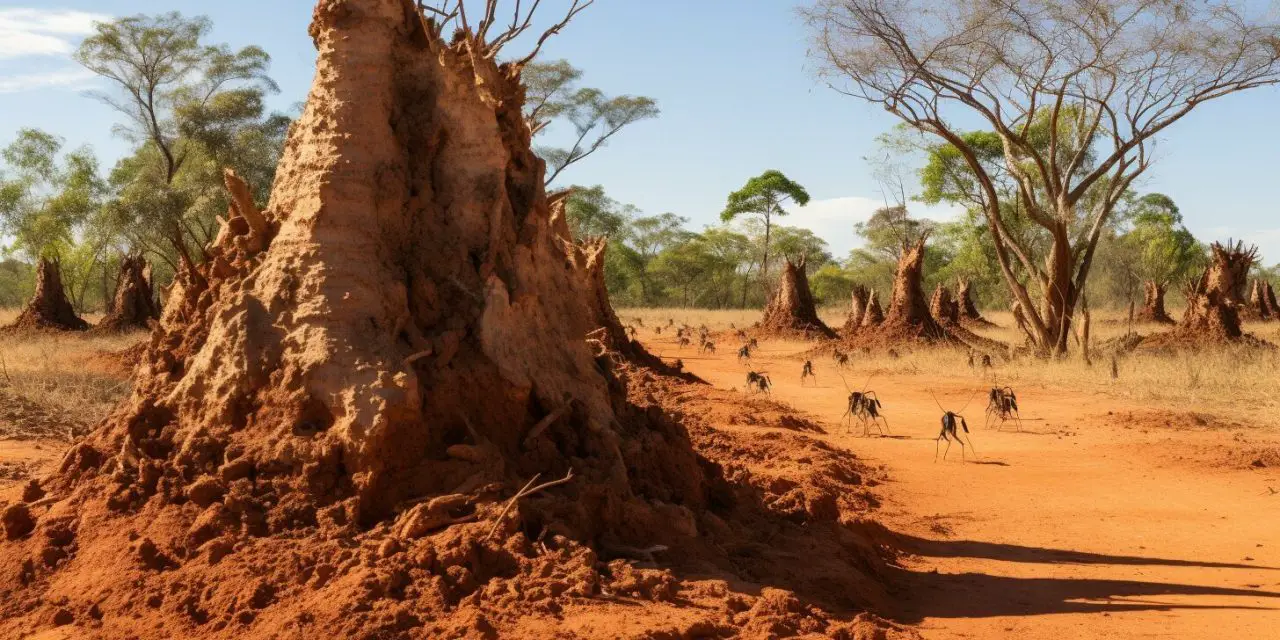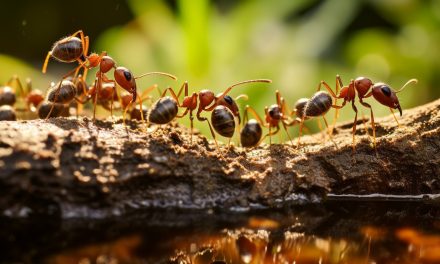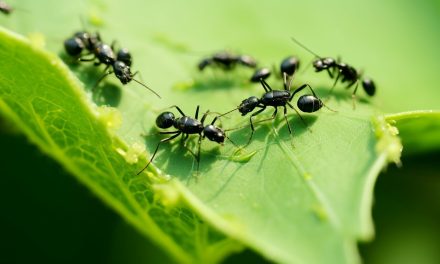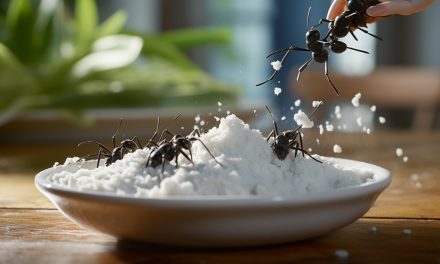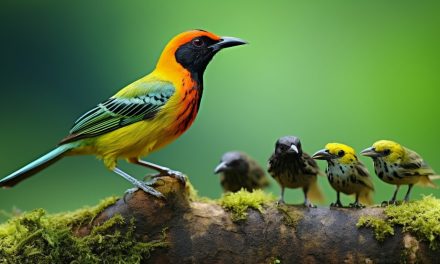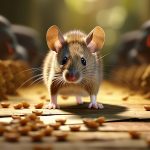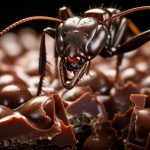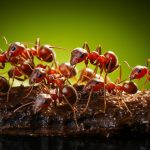This post may contain affiliate links.
Ants are a common sight in many parts of the world, often forming large colonies that work together for the benefit of their community. But have you ever wondered whether these tiny creatures consume other insects, such as termites?
This article aims to explore the fascinating relationship between ants and termites and whether ants do, in fact, eat termites. Stay tuned as we dive deeper into the behavior, diet, and natural interactions of these two fascinating insect groups.
Key Takeaways:
- Ants and termites have a complex relationship that includes both competition and cooperation.
- Ants are known to consume termites, but the prevalence of this behavior varies depending on the ant species and their natural habitat.
- The consumption of termites by ants has ecological significance and plays an important role in maintaining a balance within various ecosystems.
The Ant Diet: Exploring Ant Food Sources
Ants may be small, but they have a big appetite. These tiny insects have a varied diet and rely on a range of food sources to survive. Some ants are omnivorous, consuming both plant and animal materials, while others are more specialized and specialize in certain types of food.
Ants are known to feed on sweet substances, such as nectar from flowers and honeydew produced by aphids. They also consume other insects, including other ants, caterpillars, and termites. Some ant species have developed a symbiotic relationship with plants and are responsible for pollination and seed dispersal.
Ants are also attracted to protein-rich foods, such as meat and dead insects. They are known to scavenge for food and can quickly locate and carry away even the smallest crumbs. Their ability to find food sources is aided by their sophisticated communication system. Ants leave chemical trails, called pheromones, which guide other ants to food sources.
Ants are essential for the health of many ecosystems. They play a crucial role in controlling pest populations, pollinating plants, and aerating soil. Without ants, many plant and animal species would struggle to survive.
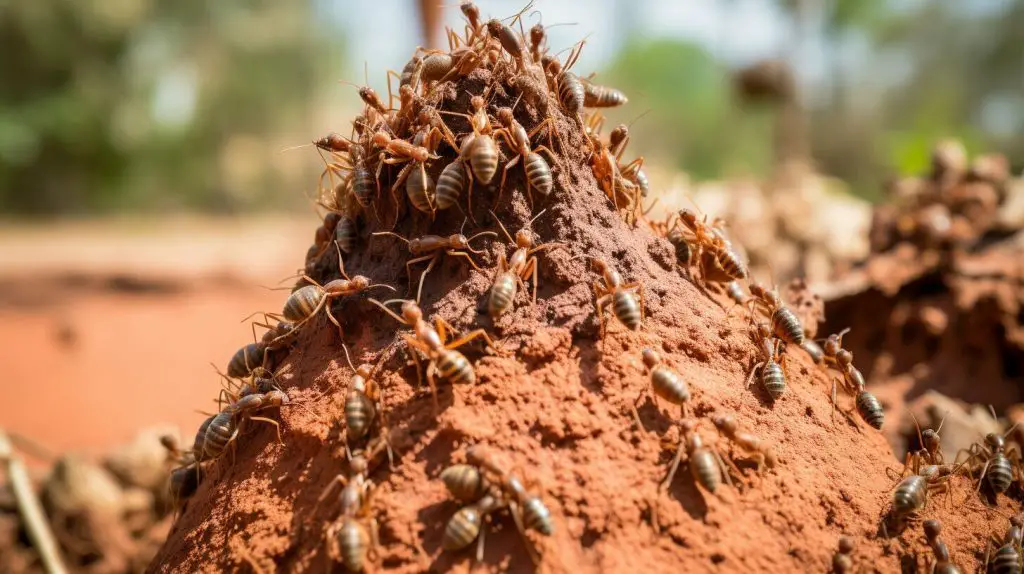
Termite Predators: Unveiling Ants as Predators
Ants and termites share a complex relationship in nature, where ants are often perceived as natural predators of termites. In fact, termites are a primary food source for many ant species, making them significant predators in termite populations.
Ants employ various tactics to hunt and consume termites. Some ants such as army ants, hunt termites in large groups, overwhelming their prey with sheer numbers. Others, like the trap-jaw ant, use their powerful mandibles to quickly snap and kill termites. Some ants, such as the fungus-growing ants, cultivate fungi that require the nutrients found in termites, making them dependent on termite predation for their food source.
The interaction between ants and termites can also be seen as a competitive relationship. Both ants and termites often compete for the same resources, such as nesting sites and food sources, leading to aggressive behavior from both sides.
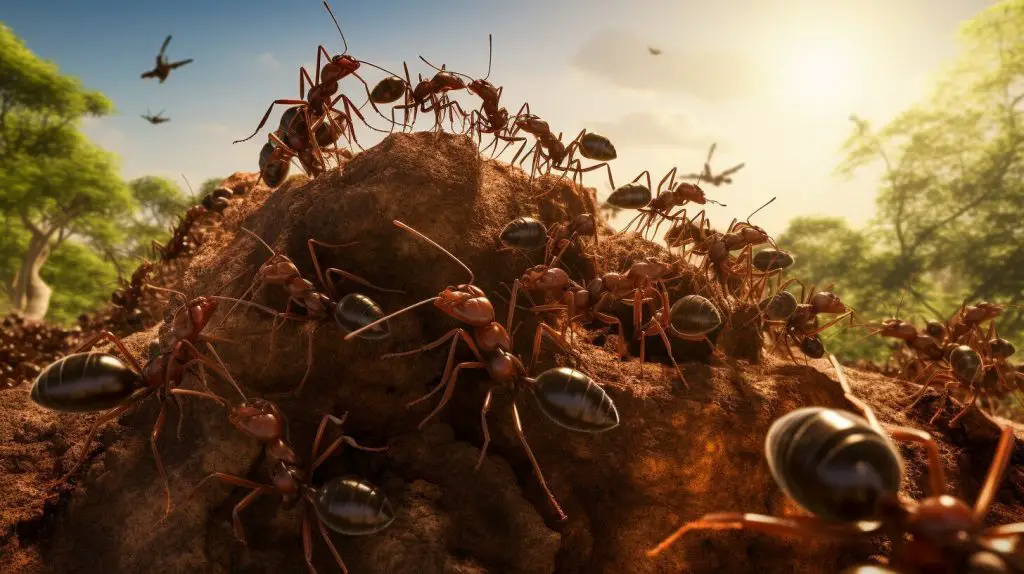
Despite their predation and competitive behavior towards termites, ants also rely on termites in various ways. Termites are known to contribute to soil fertility, and their tunneling behavior helps create habitat for other insects and animals. Ants also consume termite excrement and use termite tunnels as a means of travel.
Overall, the relationship between ants and termites is complex, involving both predation and cooperation. The natural predation of termites by ants plays an essential role in maintaining ecological balance in various ecosystems.
The Ant and Termite Relationship: A Complex Interaction
The relationship between ants and termites is a complex one. While they may be considered natural enemies due to the risk of termite damage to ant colonies, there are also aspects of their relationship that are more cooperative than competitive.
In fact, some ant species have been known to actively farm and protect termite colonies, using them as a source of food and shelter. This behavior highlights the intricate web of relationships that exist between different species in nature.
While ants and termites may share some similarities, such as their social structures and ability to build complex structures, they also have key differences in their behavior and morphology. For example, ants generally have larger and more complex brains, allowing them to engage in sophisticated communication and problem-solving.
Overall, the ant and termite relationship is a fascinating one that speaks to the complex dynamics that exist within ecosystems. As you continue to explore this topic, keep in mind the intricate balance that is required in nature to maintain the health and vitality of all species involved.
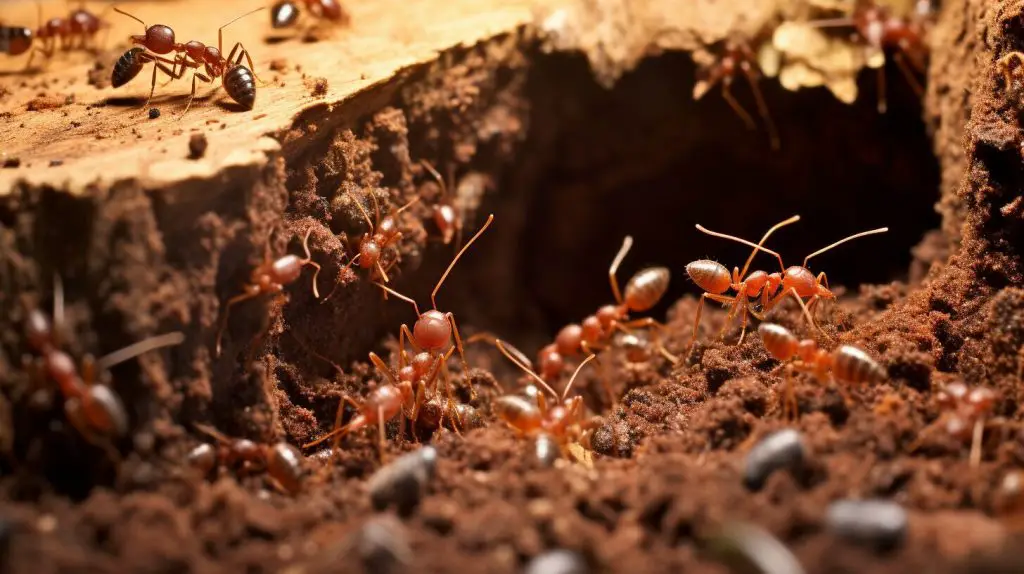
A Closer Look: Ant Behavior Towards Termites
When it comes to encountering termites, ants exhibit complex and fascinating behavior. Ants have been observed to communicate with each other using pheromones and vibrations, creating a coordinated attack strategy towards termites. They also selectively target weaker termites and employ different strategies based on the type of termite they encounter.
“When ants encounter termites, they emit alarm pheromones to signal other ants to join in the attack. The ants then use their mandibles to crush and tear the termites apart, while some ants spray formic acid on the termites as a defense mechanism.”
Research has shown that different ant species exhibit varying behavior towards termites. For example, some ants prefer to hunt termites during the day, while others hunt at night. Some ants may even take over termite nests and use them for their own purposes, while others simply prey on termites for food.
| Ant Behavior Towards Termites | Description |
|---|---|
| Communication | Ants use pheromones and vibrations to communicate with each other and coordinate their attacks. |
| Target Selection | Ants selectively target weaker termites and employ different strategies based on the type of termite they encounter. |
| Attack Strategy | Ants use their mandibles to crush and tear termites apart and may spray formic acid as a defense mechanism. |
Overall, the behavior of ants towards termites is a fascinating topic of study that sheds light on the intricate and sometimes surprising relationships between different species in nature.
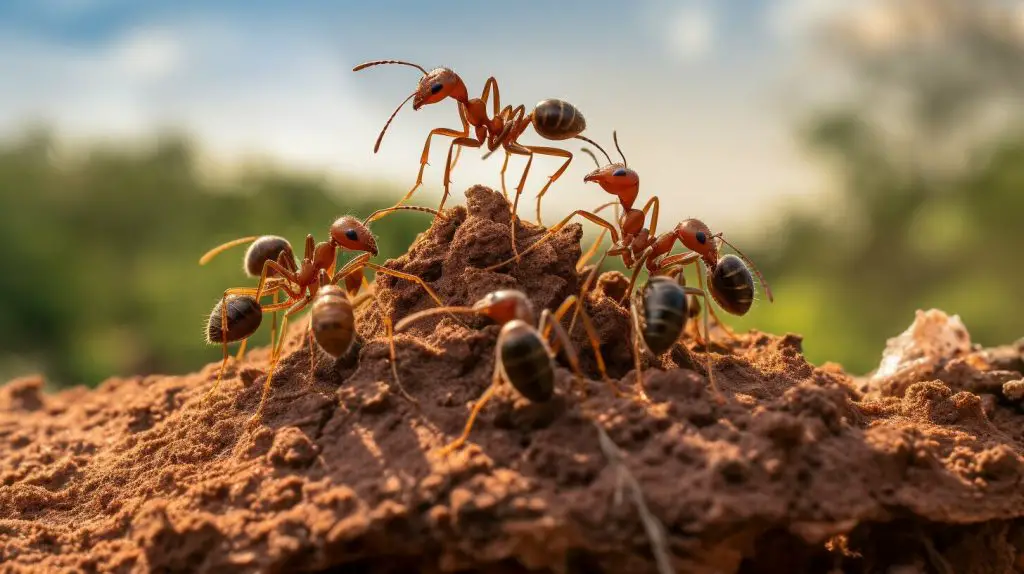
Termite Consumption by Ants: Is It Common?
Ants are known for their diverse diet and their ability to scavenge for food in a variety of environments. However, one question that often arises is whether ants eat termites, which are another common insect found in many parts of the world.
Research has shown that in fact, many ant species do consume termites as part of their diet. In some cases, ants may actively hunt termites, while in other instances they may scavenge for termite carcasses found in their environment.
While the consumption of termites by ants may not be as common as other food sources such as nectar or insects, it is still an important part of their diet and can play a significant role in the ecosystem.
One study found that the presence of ants in termite mounds can have a significant impact on the structure and behavior of termite colonies. Ants may raid termite nests, prey on individual termites, or even use the mounds as a nesting site themselves.
| Ant Behavior Towards Termites | Ant Tactics for Hunting Termites |
|---|---|
| Coordinate and communicate: Ants work together to locate and attack termites, often using chemical signals to communicate with each other. | Surround and isolate: Once termites are located, ants may surround them and prevent them from escaping. |
| Use specialized anatomy: Some ant species have specialized mandibles or other body parts that are adapted for hunting and consuming termites. | Inject venom: Ants may use venom to immobilize or kill termites before consuming them. |
Overall, while the consumption of termites by ants may not be a common behavior, it is still an important aspect of their ecology and can have significant impacts on the environment.
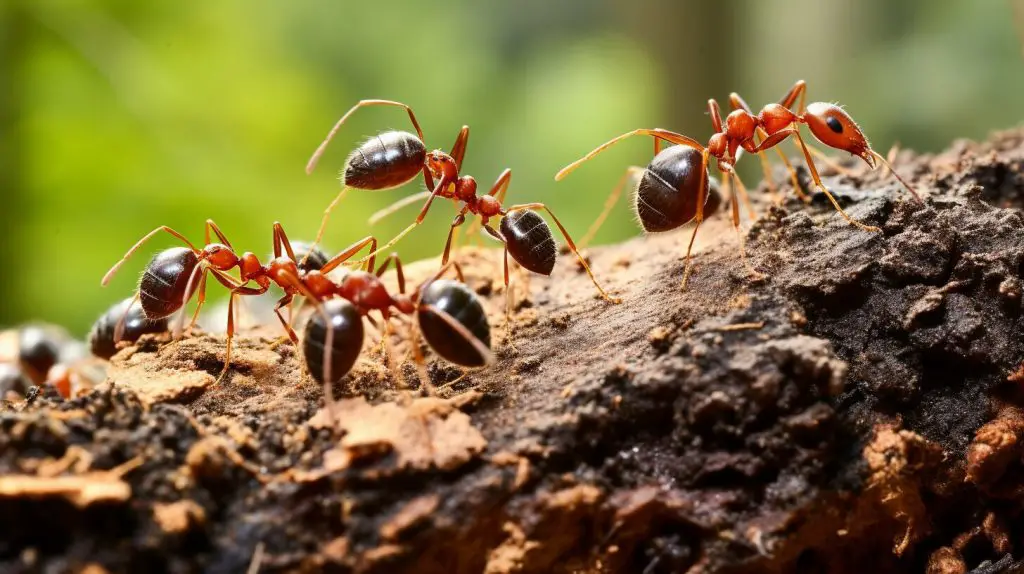
Ants and Termites in Nature: Ecological Significance
Ants and termites are two of the most abundant and ecologically important insect groups in the world. Their interactions with each other and their environment have significant impacts on the functioning of ecosystems.
Ants can play a key role in regulating termite populations. Some ant species are natural predators of termites and can help control their populations, preventing them from causing damage to plants and other insects. In turn, termites can also play a beneficial role in soil and nutrient cycling, which can have positive effects on plant growth and ecosystem health.
The relationship between ants and termites can be complex and varies depending on the species and environment. In some cases, ants and termites compete for resources such as food and nesting sites. In other cases, they may work together to build and maintain their shared habitats.
Studies have shown that the effects of ants and termites on their environment can be far-reaching. For example, the presence of termite mounds can create unique microhabitats that can support a variety of plant and animal species. Ants can also have positive effects on soil properties and nutrient cycling, which can benefit plant growth and productivity.
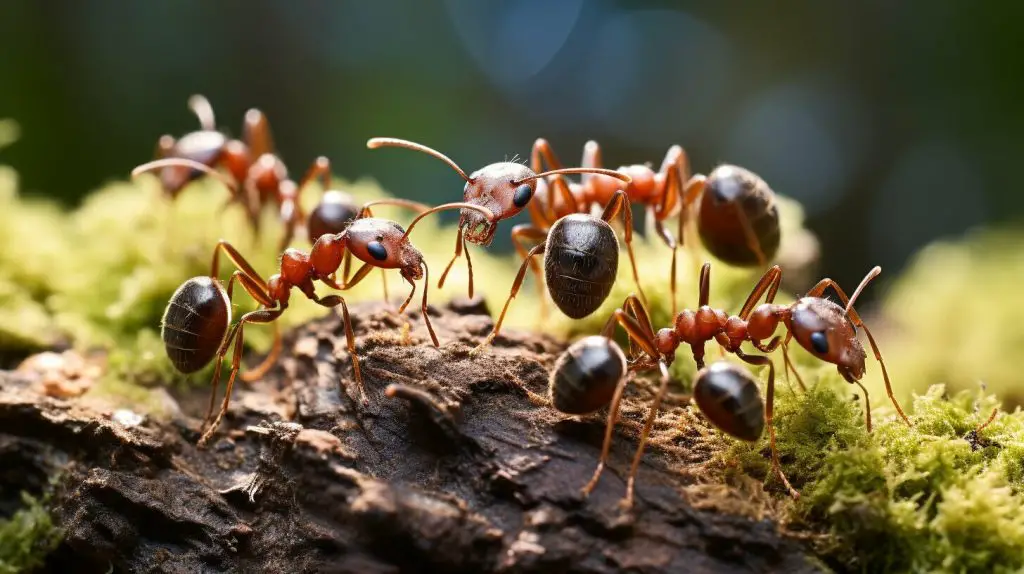
Overall, the relationship between ants and termites is a fascinating and important area of study in ecology. By understanding the ecological significance of these two insect groups, we can better appreciate the complexity and diversity of the natural world.
Ants vs Termites: Key Differences and Similarities
Ants and termites are often confused for one another due to their similar size and social behavior. However, there are several key differences between these two insect groups that set them apart.
| Ants | Termites |
|---|---|
| Ants have a narrow waist and elbowed antennae. | Termites have a broad waist and straight antennae. |
| Ants have two pairs of wings, with the front pair being larger than the back pair. | Termites have two pairs of wings that are the same size and shape. |
| Ants are predators and scavengers, feeding on a variety of food sources including other insects, nectar, and honeydew. | Termites are primarily herbivores, feeding on wood and other plant materials. |
| Ants have a complex social structure with a queen, workers, and soldiers. | Termites have a caste system that includes workers, soldiers, and reproductive individuals. |
Despite these differences, ants and termites also share some similarities. Both are social insects that live in colonies and exhibit complex behaviors. They play important roles in many ecosystems and can have significant impacts on the environment.
Overall, while ants and termites may have some similarities, they are distinct insect groups with unique characteristics and behaviors.
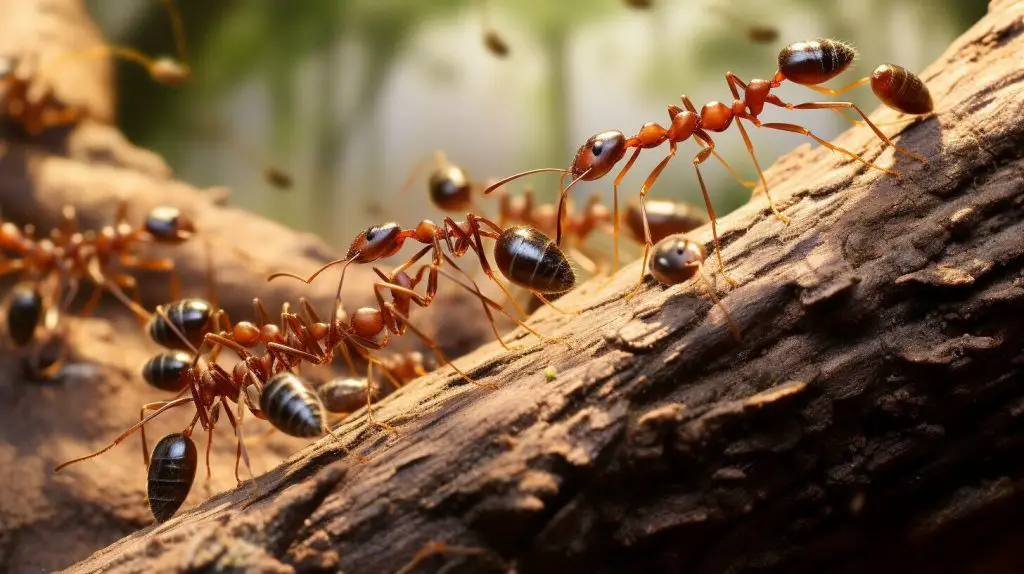
In Conclusion: Ants, Termites, and Their Intriguing Connection
After exploring the complex relationship between ants and termites, it’s clear that there is more to these insects than meets the eye. While termites are often regarded as pests, they play an important role in many ecosystems, and their interactions with ants are fascinating to observe.
Ants and termites have a complex relationship that involves both predation and cooperation. While many ant species do consume termites, this behavior is not as common as some may think. However, when ants do hunt termites, they use a variety of tactics and strategies to ensure their success.
The interaction between ants and termites has significant ecological significance, as both insects are important players in many different ecosystems. Maintaining a balance between these two species is crucial for the health of these environments and the organisms that depend on them.
Ant and Termite Relationship: A Complex Connection
One of the most intriguing aspects of the ant and termite relationship is the complexity of their interactions. While ants are often seen as the dominant species in this relationship, termites have their own unique characteristics and behaviors that make them formidable opponents.
However, despite their differences, ants and termites also engage in cooperative behaviors, working together to build complex structures and maintain their colonies. This cooperation is a testament to the resilience and adaptability of these insects, and the fascinating nature of their connection.
Overall, the relationship between ants and termites is a testament to the incredible diversity and complexity of the natural world. By understanding the dynamics of their interactions, we can gain a deeper appreciation for the intricate web of life that surrounds us.
Do Ants Consume Termites as a Source of Food?
Ants’ excretion behavior is intriguing and extends beyond their basic needs. While ants don’t directly consume termites as food, they exhibit a fascinating relationship with them. Some ant species, like army ants, raid termite colonies for their larvae. The termites’ excretion behavior often attracts ants, impacting the dynamics of the ecosystem.
FAQ
Q: Do ants eat termites?
A: Yes, ants do eat termites. Ants are natural predators of termites and actively hunt and consume them as a food source.
Q: What do ants eat besides termites?
A: Ants have a varied diet and feed on a range of food sources including other insects, nectar, fruits, seeds, and even dead animals.
Q: How do ants hunt and consume termites?
A: Ants use various strategies to hunt and consume termites. They may employ group efforts to overpower termites, use chemical signals to communicate and coordinate attacks, and utilize their strong mandibles to kill and consume termites.
Q: Do all ant species eat termites?
A: Not all ant species eat termites. Some ant species have specialized diets and may not consume termites as part of their natural feeding habits. However, many ant species do predate on termites.
Q: Are ants and termites enemies?
A: Yes, ants and termites are often considered enemies due to their natural predation relationship. Ants perceive termites as prey and actively hunt and consume them.
Q: What is the ecological significance of ants and termites?
A: Ants and termites play important roles in various ecosystems. They contribute to soil fertility, decomposition, and nutrient recycling. Additionally, their interactions and activities can influence the structure and dynamics of ecosystems.
